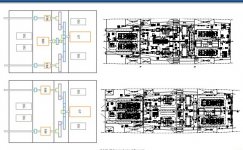Electric motors are used for most icebreakers these days (and in the sense I use "icebreakers", the AOPS are such vessels) because if you get a large chunk of ice going under the hull and jamming momentarily in the propellers, you don't break the props, gears or diesel engines. An electrical motor, just like the one in the hand held fans you played with as a kid, will simply get stopped or slowed down momentarily, then pick its speed right back up without any damage. Sure, it instantaneously increases electrical resistance and causes a brown out in the electrical system - but no damage.
The same thing happening in a mechanical ship's propulsion plant would see the diesel engine trying to put out power on one side of the gearbox, with the propeller shaft being stopped by the ice on the other side: It would grind the gears.
Also, what the Chief said.
BTW, the CSC, if it follows the Type 26 pattern (and it should since Canada has specified an even higher speed) is not a "diesel-electric" propulsion system. It's will be either a CODLOG or CODLAG system, meaning electric propulsion through a normal shaft (as opposed to MCDV's for instance, which have "Z" drives) for low speed ASW and Gaz turbine for high speed. The difference between the "LOG" and "LAG" is in the first instance, it is either electric or the GT that propels the ship - but not both together, while the LAG is a combination of both working together to effect propulsion.
CODLAG has worked quite successfully on the British Type 23 frigates (DUKE class).




